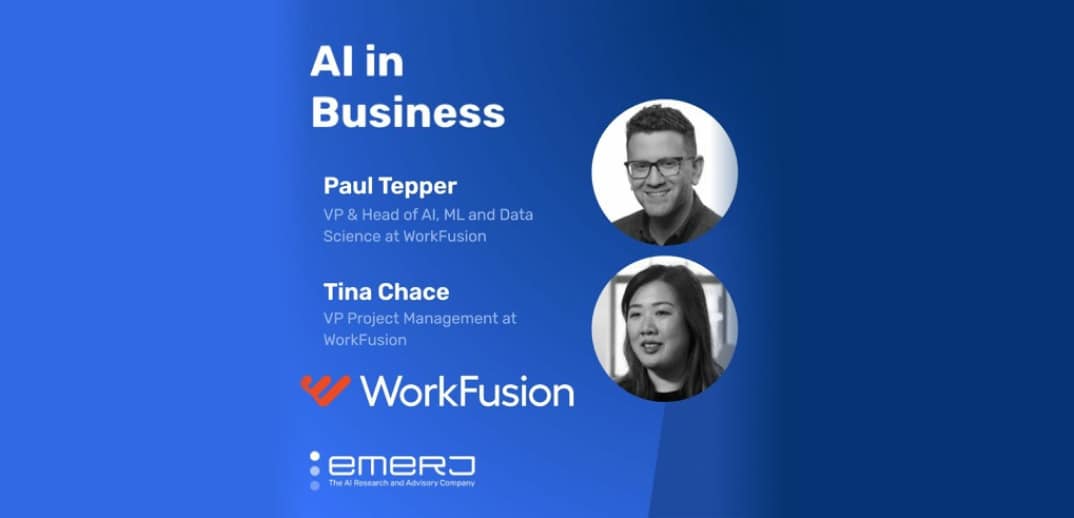What’s the difference between RPA and Intelligent Automation? Recently, WorkFusion VP and Head of AI Paul Tepper and VP of Product Management Tina Chace sat down with Emerj Senior Editor Matthew DeMello to talk about just that. On Emerj’s AI in Business podcast, they discussed why Intelligent Automation is a better solution than RPA alone for compliance and financial crime, and explored why financial crime is the perfect use case for WorkFusion’s AI Digital Workers.
Intelligent Automation vs RPA
When asked the difference between Intelligent Automation and RPA, Paul explained what it means at WorkFusion. “We’re encoding the knowledge and the expertise of a subject matter expert into an automation,” he said. “So AI is certainly part of it, but so is integration. Pulling information from different systems and transforming that information. And really encoding the business processes and the knowledge of subject matter experts into this automation and capturing something at a much deeper level than what you expect with RPA.”
Tina added, “RPA is a desktop help tool, making sure you can point and click between a couple of applications to help a person out. Whereas Intelligent Automation is really more end-to-end. It is complex workflows and use cases with the key portion of it including AI. The spirit of Intelligent Automation is trying to do complex workflows where you have to do a lot of decision-making.”
Why Financial Crime and Compliance are Great AI Digital Worker Use Cases
WorkFusion currently has six pre-built AI Digital Workers, five of which are focused on financial crime.
Why is financial crime and compliance a great use case for AI Digital Workers? According to Tina, “Financial crime and compliance is such an excellent use case for AI and Intelligent Automation because there are significant amounts of data and the penalty of doing this incorrectly is a huge fine. So, everything needs to be done consistently. You need to interpret large amounts of changing data — there are new crimes that happen, there are new people who are getting added to a watch list, and there’s fraud. Transaction patterns can change over time and there’s so much data. You can actually use that to then consistently make a decision or consistently identify patterns that can help you fight this kind of financial crime.”
She continued, “A really good example is sanctions screening or transaction screening. When a person is hired to do sanctions screening alert review, they get a little guide. It’s maybe a page, and it says if this, this, and this happens, then this is a sanctions alert. But in reality, it’s a lot of tribal knowledge that they gain by just looking at all the decisions that people in the past have made and asking their manager. This is not encoded. And, it’s also a bit of a gut feeling. So, we’re able to take the vast amounts of data on how people made sanctions decisions in the past, and actually use that to train and model a Digital Worker to make decisions consistently well.”
The Podcast
You can listen to the full podcast below.




























